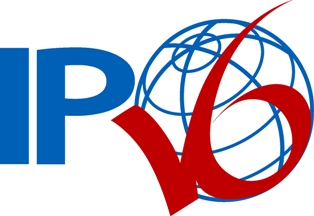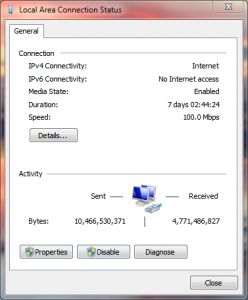10:50 PM IPv4 vs IPv6 – What Are They really |
IPv4 vs IPv6 – What Are They, Exactly
Unfortunately, most people have no idea what these terms mean, or what they are in fact referring to. As a general problem the terms are rarely explained well, and when they are, the explanations are not usually in simple form. IPv4 vs IPv6To put it quite bluntly, we’re here to answer one question; what do these terms: "IPv4 vs IPv6″, "IPv6 tutorial” and so on mean exactly? The "I” and "P” in "IPv” stands for "Internet Protocol” which directly refers to the communication protocol, or packet transfer procedure of the internet. Every device that connects to the internet uses a unique address called an IP address, which works very similar to a home/location address. Pieces of data, called "packets”, are transferred via the internet between machines, which in turn gives us the fully functioning interior workings of the online community. In order for two machines, or devices to communicate via the internet, they must transfer these "packets” of data back and forth. Unfortunately the data "packets” can not be transferred if the devices do not each have their own unique address.
While the internet does not necessarily return data "packets” that don’t reach their destination, like undelivered mail, proper use or protocol requires two devices to have unique addresses to even begin communications. IPv4 vs IPv6The "v” and number ("4″ or "6″) in "IPv4 vs IPv6″ refers to the related protocol version number. "IPv4″ is of course "Internet Protocol version 4″, and "IPv6″ is subsequently "Internet Protocol version 6″. IPv4 is of course the older, more supported version of the internet address procedure. But ultimately, there are no longer any free IPv4 addresses, meaning all of them have been occupied or taken up. What does this mean exactly? In a general sense, there will no longer be any alternative IPv4 addresses, directly meaning they will all be occupied and new users will not be able to venture into cyberspace. Although the realistic situation is not quite as dire. Queue in IPv6, the latest Internet Protocol or address procedure. The older IPv4 only supports a maximum 32 bit internet address, which translates to 2^32 IP addresses available for assignment (about 4.29 billion total). IPv6 utilizes 128 bit web addresses, allowing a maximum 2^128 available addresses: 340,282,366,920,938,000,000,000,000,000,000,000,000; which if you couldn’t already tell is a very big number. So basically the IPv4 protocol has run out of available addresses which is why most websites or internet servers are adopting the newer IPv6 protocol. In most cases, the two versions are compatible. This contrast between the two protocol versions is exactly what’s being referred to when "IPv4 vs IPv6″ is mentioned. Worldwide IPv6 Transfer
This has no direct consequences or relations to home consumers and average internet users (meaning you), the IPv6 protocol switch only seriously pertains to large online organizations with an extensive listing of online hosted content. You will likely see little to no change in online functionality or service. |
|
|
| Total comments: 1 | ||||||
| ||||||
 No
doubt while browsing the web, dealing with home networking solutions or
even participating in some form of network development you’ve come
across the terms IPv4 and IPv6. Terms like "IPv4 vs IPv6″, or "IPv6
tutorial”, or even the much broader "Internet Protocol”.
No
doubt while browsing the web, dealing with home networking solutions or
even participating in some form of network development you’ve come
across the terms IPv4 and IPv6. Terms like "IPv4 vs IPv6″, or "IPv6
tutorial”, or even the much broader "Internet Protocol”. Think
of it basically as a home address. You can’t send a mail correctly if
you don’t list a proper return address, because basically if the mail
doesn’t reach its destination it must have a way of returning back to
you. Also, the mail receiver would have no possible way of responding
considering they have no idea what address the should reply to.
Think
of it basically as a home address. You can’t send a mail correctly if
you don’t list a proper return address, because basically if the mail
doesn’t reach its destination it must have a way of returning back to
you. Also, the mail receiver would have no possible way of responding
considering they have no idea what address the should reply to. The
Internet society has worked together with several huge ISP companies
and online organizations to successfully switch the world over from use
of the older IPv4 protocol to the newer IPv6. "World IPv6 Day” is
scheduled to occur on June 8, 2011 and will involve several major
online organizations switching services to IPv6 to test out its overall
functionality and reliability.
The
Internet society has worked together with several huge ISP companies
and online organizations to successfully switch the world over from use
of the older IPv4 protocol to the newer IPv6. "World IPv6 Day” is
scheduled to occur on June 8, 2011 and will involve several major
online organizations switching services to IPv6 to test out its overall
functionality and reliability.

